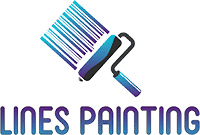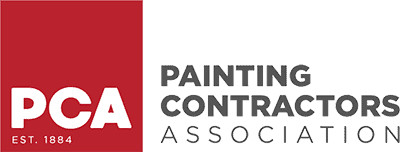Few things have the transformative power of a fresh coat of paint on your cabinets when rejuvenating your living space. However, the cabinet painting process can be daunting without the proper knowledge and techniques. That’s why, in this blog post, we’ll delve into five game-changing cabinet painting hacks that will help you achieve instant results and elevate the aesthetics of your home.
The Art of Cabinet Painting
Cabinet painting is not just about applying paint. It’s a delicate art that requires careful preparation and execution. Understanding the nuances of this process is crucial to achieving professional-looking results.
Understanding Cabinet Painting Hacks
Before we dive into the specific hacks, let’s clarify what cabinet painting hacks mean. These insider tips and techniques can simplify the painting process, save time and effort, and ultimately lead to stunning results that surpass expectations.
1. Preparation is Key
Before picking up a paintbrush, properly preparing your cabinets is essential. You may consider doing the following:
- Thorough Cleaning: Clean your cabinets thoroughly to remove any dirt, grease, or grime buildup. Use a mild detergent or a specialized cabinet cleaner to ensure a clean surface. This step is crucial as it ensures proper paint adhesion and prevents imperfections in the final finish.
- Removing Hardware: Before painting, it’s advisable to remove hardware such as handles, knobs, and hinges. This allows for easier and more even painting of the cabinet surfaces. Keep track of the hardware and label them if needed to ensure they are reinstalled correctly later.
- Filling and Repairing: Inspect your cabinets for dents, scratches, or holes. Use wood filler or spackling compound to fill these imperfections, and sand them smooth once dry. Repairing any damage beforehand ensures a flawless appearance after painting.
- Sanding: Sanding is a critical step in cabinet preparation as it creates a smooth and uniform surface for the paint to adhere to. Use fine-grit sandpaper to lightly sand the cabinet surfaces, focusing on areas with existing finish or rough spots. This promotes better paint adhesion and helps achieve a professional-looking finish.
Following these cabinet painting hacks for preparation will set the stage for a successful painting project with long-lasting and visually appealing results.
2. Choosing the Right Paint
When choosing the right paint for your cabinets, it’s crucial to consider the material of your cabinets as well as the desired finish and durability. Here are some guidelines for selecting the appropriate paint based on different cabinet materials:
Wood Cabinets
Opt for a high-quality latex or oil-based paint for wood cabinets, especially those with intricate details or grain patterns. Latex paints are water-based and dry faster, making them convenient for DIY projects. They also offer easy cleanup with soap and water. On the other hand, oil-based paints provide a more durable finish and are ideal for cabinets in high-traffic areas like kitchens.
Metal Cabinets
Choose a paint specifically formulated for metal surfaces if your cabinets are made of metal, such as stainless steel or aluminum. Look for enamel or epoxy-based paints that offer excellent adhesion and resistance to moisture and corrosion. These paints are also available in various colors and finishes, including metallic and satin options.
Laminate Cabinets
Laminate cabinets require a particular type of paint to ensure proper adhesion and longevity. Look for paints labeled “laminate-friendly” or “cabinet refinishing paint.” These paints are designed to bond effectively with laminate surfaces and provide a durable finish that resists chipping and peeling.
By choosing the right type of paint based on your cabinet material, you can achieve a professional-looking finish that enhances the beauty and durability of your cabinets.
3. Brushing Techniques for Cabinet Painting
Brushwork can make or break your cabinet painting project. Use high-quality brushes and learn proper brushing techniques to achieve smooth, even strokes. Here are some cabinet painting brushing techniques you can use:
| Brushing Technique | When to Use | How to Apply |
|---|---|---|
| Vertical Strokes | When painting cabinet doors or panels with vertical grain patterns. | Dip the brush into the paint, tap off the excess, and start from the top of the cabinet surface, moving downward in straight, vertical strokes. Work in sections to ensure even coverage. |
| Horizontal Strokes | For cabinet surfaces without visible grain patterns, such as flat panels or areas with horizontal lines. | Load the brush with paint, tap off excess, and apply the paint in horizontal strokes, working from one side of the cabinet to the other. Blend each stroke smoothly to avoid visible lines. |
| Cross-Hatching | Achieving thorough coverage and minimizing brush marks on large, flat cabinet surfaces. | Apply the paint in one direction using vertical or horizontal strokes. Once the first layer is dry, apply a second coat using strokes perpendicular to the first layer, creating a cross-hatched pattern. This technique helps fill in any gaps and ensures an even finish. |
| Feathering | Seamlessly blending paint, especially around edges, corners, and areas where two colors meet. | Apply a small amount of paint to the brush and gently, feather-like strokes along the edges or transitions. Feathering helps soften harsh lines and creates a smooth transition between colors or sections. |
| Dry Brushing | Creating a distressed or aged look on cabinets, adding texture and character to the finish. | Dip the brush into the paint, then remove most of it by wiping it on a paper towel or rag. Lightly brush the cabinet surface with the remaining paint, using quick and random strokes. Dry brushing adds a subtle layer of paint for a worn or rustic appearance. |
4. Utilizing Painter’s Tape
Painter’s tape is indispensable for creating crisp lines and precise edges in painting projects. It’s essential to use painter’s tape to mask off areas like hinges and handles before applying paint. Properly taping these areas ensures that only the intended surfaces receive paint, producing a professional finish. When removing the tape, do so carefully and gently to avoid pulling off dried paint along with it, which can mar the clean lines you worked hard to achieve.
5. Adding Decorative Elements
Incorporating decorative elements can take your project to the next level. Don’t hesitate to unleash your creativity and explore various options to personalize your cabinets. Here are some suggestions to consider:
- Stencils: Stencils are versatile in adding intricate patterns, motifs, or designs to your cabinets. You can choose from various stencil designs to suit your style, whether geometric patterns, floral motifs, or artistic illustrations.
- Decals: Decals offer a quick and easy way to introduce decorative elements to your cabinets. They come in various shapes, sizes, and themes, allowing you to customize your cabinets with decals that reflect your personality or complement your overall decor theme.
- Hardware: Upgrading cabinet hardware can significantly impact the overall look of your cabinets. Consider replacing old knobs, handles, or pulls with stylish and modern hardware designs. Opt for finishes that complement your cabinet color and style, such as brushed nickel, matte black, or antique brass.
- Glass Inserts: If your cabinets have panels, consider replacing some panels with decorative glass inserts. Frosted, stained, or patterned glass can add elegance and visual interest to your cabinets while showcasing items stored inside.
- Painted Accents: Introduce painted accents to highlight specific areas of your cabinets. For example, paint the inside edges of cabinet doors in a contrasting color or add a pop of color to drawer fronts for a playful touch.
Incorporating these decorative elements lets you personalize your cabinets and infuse them with character and charm. Experiment with combinations and techniques to achieve a unique and visually appealing result that enhances your interior design scheme.
Transform with Cabinet Painting Hacks
Mastering the art of cabinet painting is achievable with the right knowledge and techniques. By implementing the 5 game-changing cabinet painting hacks, you can achieve instant results and elevate the aesthetics of your home without breaking the bank.
Lines Painting, with our team of experienced professionals, offers cabinet painting services in Seattle, WA, that can give your cabinets a new look without the hassle and expense of replacement. Our team is well-versed in all types of painting and refinishing home improvement projects, ensuring the highest quality that matches your style and budget. Call us at (425) 434-8887 to get a free quote today!

